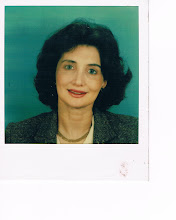McJobNews: Hark! Its Time to Brand Your Resume.
http://mcjobnews.blogspot.com/
When you’re searching for a job the rules of the game have changed, say social media marketing experts.
Now, you must brand your resume to capture your career identity, passion and image. It is not good enough to produce a resume to help recruiters find you join social media sites such as Linkedin, Facebook, and Twitter. The best situation is when a recruiter types in your job type and does a search on Google and comes up with your name.
Define your brand
Branding is defined as a promise of the value of a product that it is better than all others. There are 6.9 billion people on the planet and each one of us is different. Branding defines your unique image. You create it by defining who you are at the top of your resume and follow up with a personal/career statement. The top line should say “Marketing Executive” instead of your name on your resume. Underneath that title, write your name and address just like in an old fashion resume.
Develop a branding statement for your resume
A branding statement is similar to a sales presentation that tells an employer what makes you special as well as the qualities that make you unique and accomplished. It mentions what you can do for an employer such as the benefits you offer and the problems you have solved for other. The basic formula according to Brand Yourself by David Andrusia and Rick Haskins is Skills plus Personality/Passion plus Market Needs = Branding Statement.
Use words like poised, positioned, equipped, prepared or delivered to start off your description of what you can do for an employer and finish the statement by adding and skills and personal qualities.
For example:
Educational Non-Profit Executive
Deliver strong sales and leadership skills with a significant record of progressive success at non-profit organizations. Developed a keen ability to forge relationships and recognize multidimensional levels to turn business opportunities into vibrant centers of profit. Excel at strategy building, marketing, and fundraising while functioning as a highly articulate and effective communicator.
Certified Sterile Processing Technician
Poised to deliver excellence while performing decontamination, preparation, sterilization and distribution of surgical instruments, hospital trays and medical equipment used at medical facilities. Skilled at nuclear waste disposal as well as organizing and maintaining laboratory inventories. Productive, courteous, efficient and reliable with a strong commitment to providing superior service.
Brand business cards and cover letters
Your business cards, resume, and cover letter must show a unified format. Every word, bullet point and border must reflect a consistent branded look and should support the message you want to send. Today not developing your brand can be compared to attending a business meeting with a blindfold on and cotton stuffed in your ears.
Support your branding statement with effective sentences that build layers of skills and accomplishments and support the general premise.
Focus on your unique accomplishments
The content of your resume should focus on your unique accomplishments and tell how you increased profits or efficiencies at prior jobs. Focus on developing keyword density by repeating key words loaded in the job description in your branding statement and work history. Apply the same strategy in creating a cover letter.
Build an on-line branding plan to get your resume posted on the front page of Google and Facebook. Recruiters search for candidates on Google and through other social media to fill job openings. Getting found is extremely important. They have to be able to find you by typing in the job tile you entered on your resume. Join linked-in to develop a professional rich keyword profile. Join groups and participate in discussions and grow your contacts through networking on-line and by meeting others. Respond to discussions and blogs on-line by leaving comments and a link to your resume, blog or website called link backs.
Submit your resume to different search engines such as careerbuilder.com and Monster.com which will allow you to advertise your resume on their site.
Resources
The New Rules of Marketing and PR by David Meerman Scott 15.49 Hardcover: 276 pages. Wiley. ISBN-978-0470-11345-5.
Career Distinction Stand Out by Building Your Brand $21.95 Hardcover: 244 pages. Wiley. ISBN-10: 0470128186.
Branding You: How to Create an Identity for a Brilliant Career. Paperback: 256 pages. Ballantine. ISBN: 0345423593


